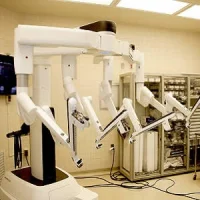A new survey shows an accelerated rate of technology adoption in nursing education in the U.S., which is driven by two factors: a shortage of clinical training sites for students and hospitals' growing demands for practice-ready nurses.
When it comes to the need for advanced technology in nursing education, 63 percent of the 500 nursing faculty and administrator survey respondents cited the influence of the evolution of technology utilisation in practice and 39 percent pointed to limited availability of sites for students to hone clinical skills.
Sixty-five percent of nursing education programmes in the U.S. use virtual simulation, while virtual reality utilisation is expected to increase from 10 percent to 45 percent over the next five years, according to “Future of Technology in Nursing Education,” a new survey report from Wolters Kluwer Health and the National League for Nursing’s Center for Innovation in Simulation and Technology.
Here's another major finding of the survey: nursing education programmes are adopting new technology at a faster pace than general education. That conclusion was based on the rate of technology adoption in the broader general education market identified in the Horizon Report and was attributed to the need to address issues unique to nursing education.
For instance, 64 percent of nursing education programmes use adaptive quizzing models and 60 percent use electronic health records, the report found.
“This survey confirms the important role nurse educators play in advancing the use of technology in the classroom through their willingness to act as early adopters and trailblazers,” said Julie Stegman, vice president and publisher, nursing education, Wolters Kluwer Health Learning, Research and Practice. The use of innovative technologies like adaptive quizzing and virtual simulation helps nurse educators to overcome resource challenges, she added.
The report also said that, over the next five years, many of the most popular current technologies will be replaced by next-generation solutions. In particular, more complex technologies like data analytics tools will take relatively longer for adoption, with their use increasing from 14 percent to 34 percent in five years.
“This is yet another area where nursing education is forging its own path,” said Sue Forneris, RN, excelsior deputy director, National League for Nursing Center for Innovation in Simulation and Technology. “Where general education is expected to focus on adaptive learning and Internet of Things technologies over the next five years, nursing programmes will be implementing virtual reality and data analytics tools.”
The difference can be explained by the fact that nursing education has already made adaptive learning a core component. This is also because the targeted technology addresses unique needs in nursing education and practice, Forneris said.
Source: Healthcare IT News
Image Credit: Pixabay
Latest Articles
Technology, Clinical Training, nurse education
A new survey shows an accelerated rate of technology adoption in nursing education in the U.S., which is driven by two factors: a shortage of clinical training sites for students and hospitals' growing demands for practice-ready nurses.










